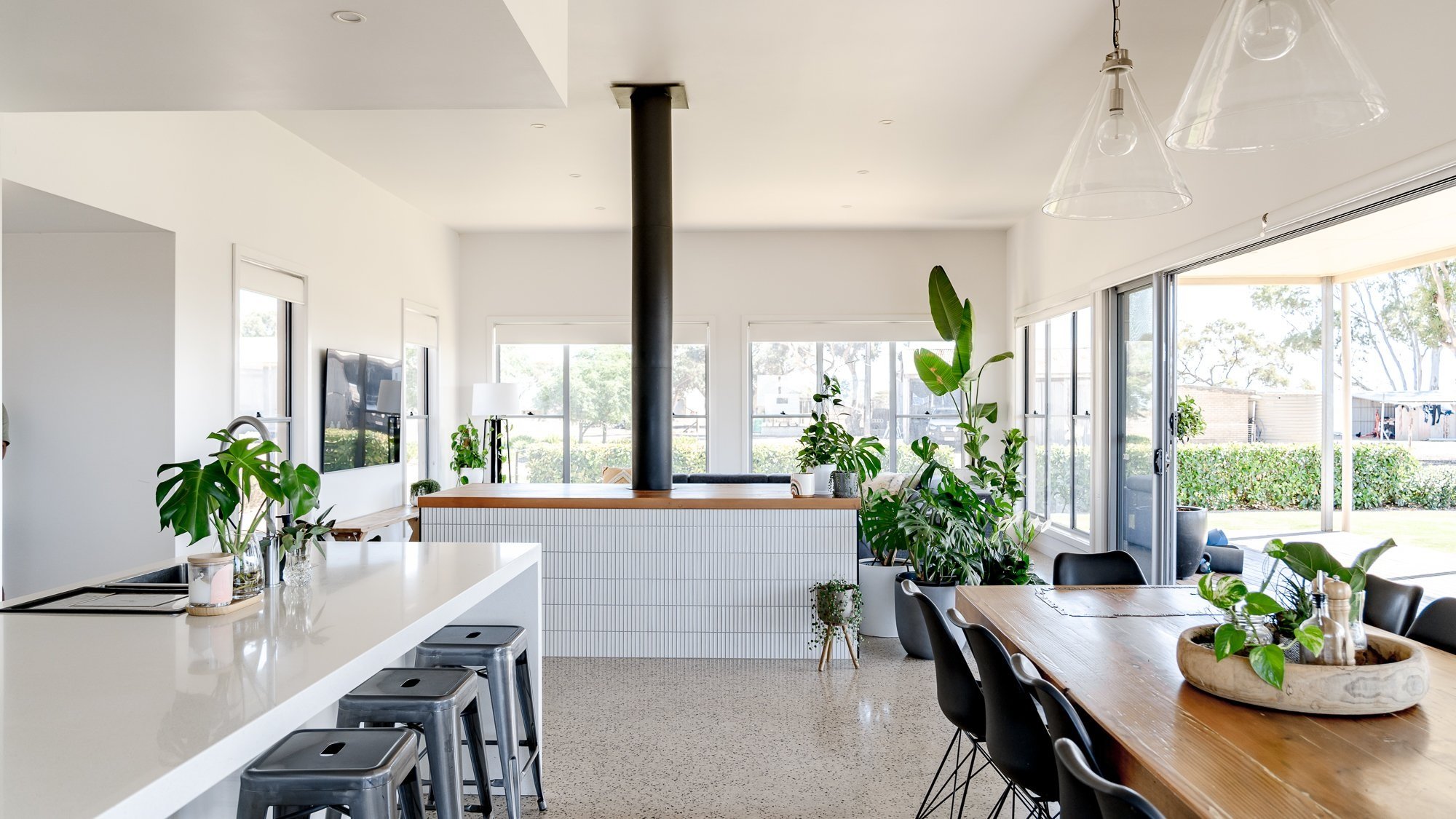Leet and Meg
A journey to self sufficiency in South Australia
Location: South Australia, Australia
Project: Farmhouse renovation and self-sufficient garden
Size: 4 bedroom, 2 living
Booken Blend Resource: Sustainable Build Checklist
Photographer: Lisa, Booken Blend
Imagine living off the land.
Now imagine no more, because I’m going to introduce you to Leet and Meg who are doing just that.
Imagine a life where your days are spent nurturing a vibrant veggie garden, cozying up in a charming farmhouse, and enjoying the freedom of living off the land.
This isn't just a daydream; it's the reality for Meg & Leet, two everyday peeps who turned their homesteading dream into a living, breathing journey of self-sufficiency.




















Making the homesteading dream a reality.
Many of us dream of a life of self-sufficiency. We conjure up images of weekends spent tending a thriving veggie patch, evenings snuggled in a cosy farmhouse, cook-ups with our friends, and a roof bejewelled in solar panels that allow us to live independently of the grid.
But not too many of us actuallllllly bring this vision to life (my sad veggie patch is a case in point).
This is why we were so excited to meet Meg & Leet, two inspirational, everyday humans having a crack at making the homesteading dream a reality.
Highlights
Highlights
-
Decade of Dedication
Leet and Meg invested ten years into transforming a historic limestone farmhouse into their dream home.
-
Passive Solar Design
Their home incorporates polished concrete for thermal mass and north-facing glazing to harness winter sunlight.
-
Energy Self-Sufficient
They installed 13 kW of solar panels and 20 kWh of battery storage to meet all their energy needs independently.
-
Food Independence
Starting from a modest veggie patch, they now enjoy a thriving orchard and a hydroponic system, extending their growing season.
-
Tech-Enabled Garden
Leet's background in agriculture tech enhances their efficiency with state-of-the-art weather stations and monitoring systems.
-
Community Inspirations
They are keen to share their learnings to inspire and guide others.

A life of energy and food self-sufficiency
For Meg & Leet, it’s been a long labour of love. They purchased their one-hectare plot ten years ago and immediately began planning a renovation of the historic limestone farmhouse.
They learned a lot through the design phase and were grateful to have a knowledgeable designer who incorporated passive principles such as polished concrete floors for thermal mass and north glazing for thermal gain in winter.
Meg & Leet's property is grid-connected, however, 13 kW of solar panels and 20 kWh lithium battery storage covers all their energy needs. This scenario means they use the grid as a 'backup', unlike our home, which is not connected to the grid and has a diesel generator for backup (for more info, read journal entry All the Benefits of Off-grid Without the Hassle).
Leet explains their food-sufficiency dream is very much a case of 'from little things, big things grow.' What started as a small veggie patch has evolved into a thriving orchard, garden beds full of seasonal vegetables, and a hydroponic system that allows them to access produce outside regular growing seasons.
Meg will tell you the dream has very much been fuelled by Leet's lifelong passion for food production and off-grid living, and it's this passion, combined with his background in agriculture and tech (Leet runs a business called Agbyte, installing weather stations and environmental monitoring systems all over Australia), which has been the secret to their success.
I can't wait to learn more from Leet & Meg and am cheering loudly as they see how far they can take this life of energy and food self-sufficiency..
Like what you see? Let’s work together
Learn how to integrate sustainable design into your home. Start planning today!



